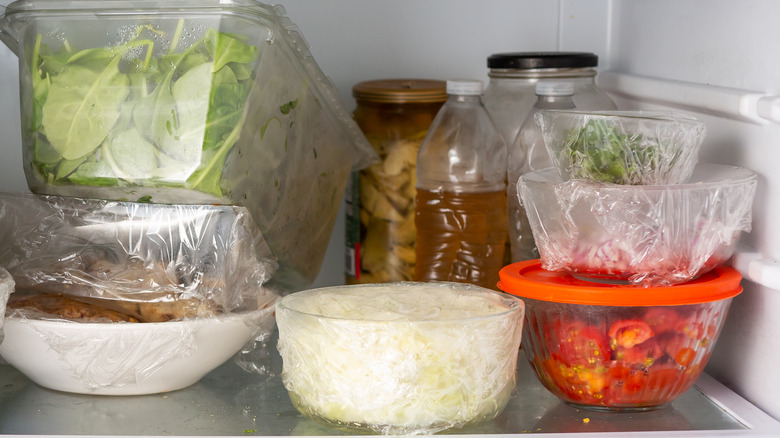Is It Dangerous To Eat Leftover Rice?
Batch cooking meals can be hard; and that goes doubly so with grains and pasta, which often seem to expand to a greater yield than required. No reason to stress though, as that leftover rice sitting on the stove is easy to repurpose into a variety of applications. Some dishes, like fried rice, even benefit from the stale ingredient due to the way the starch in rice reacts to being chilled, per America's Test Kitchen.
Yet storing and reheating any food can be a gamble, especially when you're unfamiliar with its shelf-life. And when it comes to rice it's complicated — and necessary — to take some serious precautions, since spores of a bacteria called Bacillus cereus are known to breed in the starch. If you've ever been unlucky enough to have tangled with the bacteria before you were probably just told you had food poisoning (if you even bothered to consult a doctor), common side effects of which include vomiting and diarrhea, according to the U.K.'s National Health Service. Food poisoning is no walk in the park, and in extreme situations can have deadly results (via CDC).
Luckily for rice fans, with proper storage leftover rice is perfectly safe to eat. But is the rice cooker an apt storage device? Is smelling the rice and looking for mold enough of a test for edibility? How quickly should it go in the fridge?
If you're cautious with lefover rice is is not dangerous
There are a few things you need to know when storing rice, which will help you avoid the dreaded Bacillus cereus.
For starters, the real dangers of eating leftover rice arise if it's not cooled properly before being reheated. Since bacteria thrive in temperatures between 40 to 140 degrees Fahrenheit, room temperature is the most dangerous environment for leftover rice. If any food is left out for more than two hours it's best to discard it, according to the USDA, but for rice specifically, the University of Wisconsin-Madison explains it's smart to err on the side of safety and put it in the fridge after just one hour, spreading out the rice in a shallow container to help it cool more quickly. When properly stored, rice can keep in the refrigerator for three to five days. Another option is to store rice leftovers in the freezer. The USDA says that frozen foods can be stored indefinitely, but recommends a freezer limit of three to four months for optimum flavor.
When it's time to reheat your rice, 165 degrees Fahrenheit is the target temperature whether you're cooking in a microwave, an oven, or on a stovetop. Be sure to check your reheated rice with a food thermometer to ensure the center is hot enough to kill off any Bacillus cereus bacteria that may have crept by your cooling technique.
If you follow these storage and reheating techniques leftover rice should be perfectly safe to eat; vigorously avoiding temperatures prosperous for bacteria can keep the dangers at bay.

